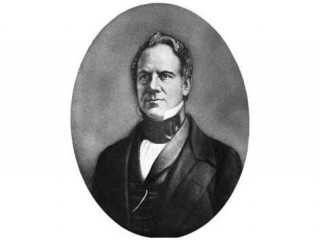
Moses Beach biography
Date of birth : 1800-01-07
Date of death : 1868-07-19
Birthplace : Wallingford, Connecticut, United States
Nationality : American
Category : Science and Technology
Last modified : 2011-12-07
Credited as : inventor, newspaper entrepreneur, New York Associated Press
An American inventor and newspaper entrepreneur, Moses Yale Beach contributed to the technology of his time but was, above all, an important developer of popular journalism.
Moses Beach was born in Wallingford, Conn., on Jan. 7, 1800, the son of a farmer. He was apprenticed to a cabinetmaker in Hartford, where his exceptional industry enabled him to earn his freedom at the age of 18. Beach set up as a cabinetmaker in Northampton, Mass., and in 1819 he married Nancy Day. His bent for technical innovation was strong, and after moving to Springfield, Mass., he began a strenuous campaign to achieve success. His experiments with engines powered by gunpowder failed. A plan to introduce steam navigation on the Connecticut River might have succeeded, but Beach's funds gave out. Most successful was his design of a rag cutter for paper mills, but he did not patent it in time and so lost a fortune.
In 1829 Beach became associated with a paper mill in Saugerties, N. Y. Dissatisfied with its progress, in 1834 he joined his brother-in-law Benjamin Day in New York City as business and technical manager of the Sun, the first, and an outstanding example, of the "penny" newspapers which were bringing popularity to party-politics journalism. In 1835 Beach purchased part ownership of the Sun for $5, 200. The Sun was then the most popular newspaper in the world, with 30, 000 readers. Yet production expenses and the loss of advertising revenue occasioned by economic depression kept profits low. Accordingly, 3 years later Day sold Beach his own portion of Sun holdings for $40, 000 (an action he later regretted). Although Beach was not a journalist in the same sense as his competitors James Gordon Bennett and Horace Greeley, the Sun's continuing success was the result of his policies. In his 10 years of proprietorship he expanded the four-page paper from three columns to eight. He developed horse, rail, and pigeon services to speed news-gathering into his New York offices. He also contributed to the journalism of his era with such features as the "Moon Hoax" of author Edgar Allan Poe on April 13, 1844.
Beach's main accomplishments were, however, technical, as in his organization of the New York Associated Press and the Harbor Association, both intended to curb inefficiency and duplication of work among competitors in the newspaper business. Beach's Weekly Sun extended his paper to the countryside, and his American Sun in 1848 became the first paper to carry American journalism directly to Europe. Notable, too, was his pamphlet, The Wealth of New York: A Table of the … Wealthy Citizens of New York (1841, and subsequent editions).
Although Beach was not conspicuous in public affairs, his good repute in 1846 did influence President James K. Polk to commission him to negotiate peace terms with Mexico. However, a false rumor of an American military defeat prevented Beach's departure.
When Beach's health failed, he retired to Wallingford and in 1848 turned over the Sun, with a circulation of 50, 000, to two of his sons, the talented Moses S. Beach and Alfred Ely Beach. He died on July 19, 1868.
















